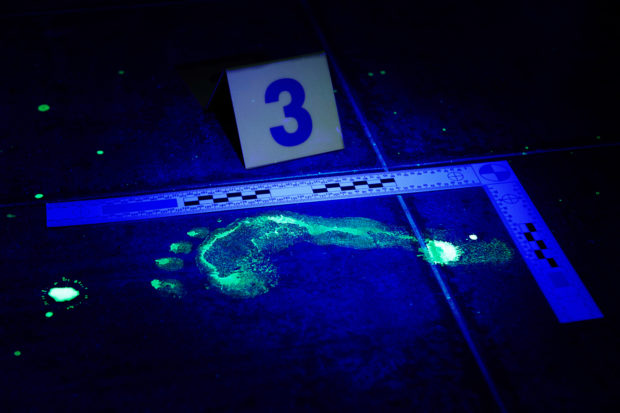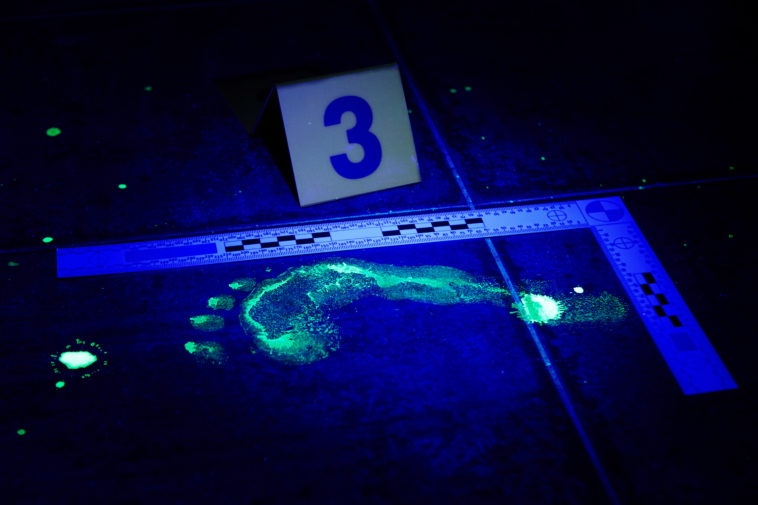If you are a superfan of crime television shows such as Law & Order or Criminal Minds, then you might consider yourself a sort of crime scene investigation expert. But do you know the true science behind the famous luminol blood detection strategy?
If you are not sure what I’m talking about, let me paint the picture. Whenever investigators are stumped about what transpired at a crime scene, they often turn off all the lights and spray a chemical all over the room.
Then, the actors grab a black light and observe how any blood left behind starts to glow a blueish color.
That chemical is known as luminol. Chemically named C8H7N302, luminol is a compound that is able to produce a chemiluminescence reaction after coming into contact with blood.
Once sprayed, any luminol that touches the hemoglobin present in the blood will cause the area to glow.
Unlike in popular television, though, a black light is not necessary to observe the blue hues. The only thing that investigators need to detect this illuminated evidence is a dark room. And since 1937, this crime scene tool has forever changed police investigations.
Interestingly, though, scientists first synthesized luminol back in 1902. But, it was not until 1927 that a group of German scientists discovered the chemical’s luminescent properties.
And still, it took one more decade for Walter Specht– a German forensic scientist– to consider using this chemical for crime scene blood detection.
In 1937, Walter suspected that luminol would react to hemoglobin. So, he conducted an experiment wherein stone walls, bushes, furniture, and rusty fences were sprayed with blood.

Sign up for Chip Chick’s newsletter and get stories like this delivered to your inbox.


